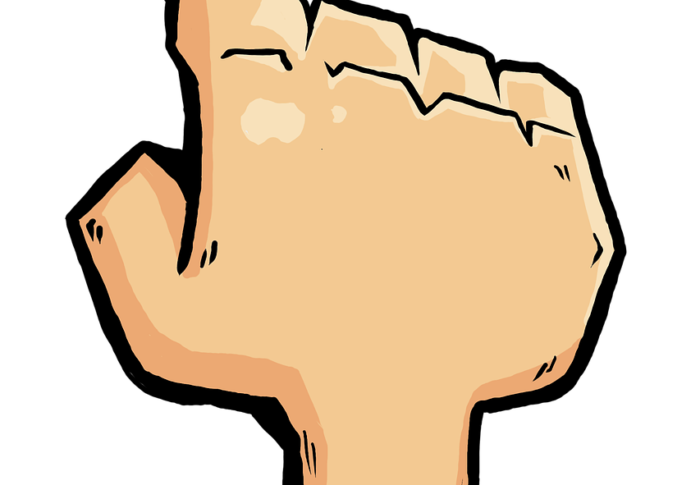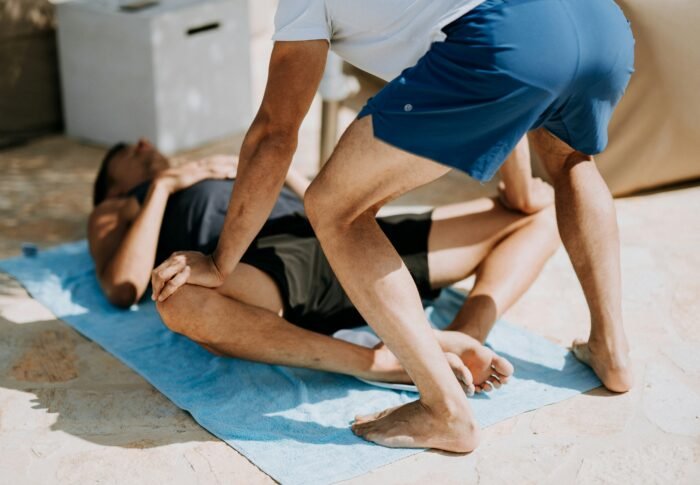
Quick and Easy House Training Tips for Dogs
Are you tired of coming home to find a mess on your floor courtesy of your furry friend? Well, fret no more because we have the perfect solution for you! In this article, we will share some quick and easy house training tips that are sure to help you teach your dog proper bathroom etiquette. Say goodbye to those frustrating accidents and hello to a clean and odor-free home. Let’s get started!
Find products like these on Amazon!
Establish a Routine
House training your dog is an important process that requires establishing a routine. By setting a schedule, designating specific potty areas, and using consistent commands, you can help your dog quickly learn the appropriate behaviors.
Set a schedule
To establish a routine, it is crucial to set a schedule for your dog’s potty breaks. Dogs thrive on routine, so try to take them outside at the same times every day. This consistency will help them understand when it’s time to go and prevent accidents inside the house. Start with frequent bathroom breaks, gradually increasing the time between them as your dog becomes more reliable.
Designate specific potty areas
Choose specific areas in your yard where you want your dog to go potty. Consistently taking them to these designated spots will help them associate the location with the appropriate behavior. Make sure these areas are easily accessible and away from areas where your dog plays or spends a lot of time. This distinction between potty areas and play areas will reinforce the idea that there is a time and place for everything.
Use consistent commands
Using consistent commands is essential for effective house training. Choose simple and clear phrases, such as “go potty” or “do your business,” and use them consistently every time you take your dog outside to go to the bathroom. The repetition of these commands will help your dog understand what is expected of them and reinforce the desired behavior. Be patient and give them time to understand and respond to the commands. Consistency is key in building a strong foundation for successful house training.
Teach Basic Commands
In addition to potty training, teaching your dog basic commands is an important part of their overall training. Starting with basic commands like “sit” and “stay” will not only make your life easier but also help establish you as the pack leader and provide mental stimulation for your furry friend.
Start with ‘sit’ and ‘stay’
The commands “sit” and “stay” are great foundational commands to begin with. Teaching your dog to sit on command not only allows you to control their behavior but also helps prevent jumping and other unwanted actions. Start by holding a treat above your dog’s head and move it back, causing them to lower their hindquarters into a sitting position. As their tail hits the ground, say “sit” and reward them with the treat and verbal praise. Practice this command frequently, gradually phasing out the use of treats and relying solely on verbal praise.
Once your dog has mastered the sit command, move on to teaching them to stay. Start with having them sit, then take a step back. As you move away, say “stay” in a calm yet firm tone. If your dog stays in place, immediately praise them and give a treat. Slowly increase the distance and duration of the stay command over time. Consistency and positive reinforcement are key when teaching these basic commands.
Use positive reinforcement
Positive reinforcement is a powerful tool when training your dog. Rather than focusing on punishing unwanted behaviors, concentrate on rewarding and reinforcing the desired ones. When your dog successfully follows a command, praise them enthusiastically, offer treats, or give them a favorite toy. This positive feedback will create a positive association with following commands and motivate your dog to continue behaving appropriately.
Be patient and consistent
Training takes time, and every dog learns at their own pace. It’s important to be patient and understanding throughout the training process. Consistency is also key. Use the same cues, gestures, and rewards each time you work with your dog. This consistency will help them understand what is expected of them and decrease confusion. Remember, training is an ongoing process, so continue to practice commands regularly to maintain their proficiency.

This image is property of images.pexels.com.
Find products like these on Amazon!
Monitor Food and Water
Properly managing your dog’s food and water intake is crucial for effective house training. By controlling portion sizes, establishing regular meal times, and monitoring water intake, you can better predict and manage your dog’s bathroom needs.
Control portion sizes
Controlling portion sizes is important for maintaining your dog’s overall health and preventing accidents in the house. Feeding your dog consistent and appropriate portion sizes helps regulate their digestive system and bathroom habits. Consult with your veterinarian to determine the ideal amount of food for your dog’s breed, size, and activity level. Avoid free-feeding, where food is available at all times, as this can make it more challenging to predict when your dog needs to go to the bathroom.
Establish regular meal times
Establishing regular meal times creates a predictable routine for your dog’s digestive system. Feed your dog at the same times each day, ideally in the morning and evening. This schedule allows you to anticipate when they will need to go outside for bathroom breaks. Additionally, having set meal times helps prevent overeating and promotes a healthier appetite. Stick to the designated meal times as closely as possible, even on weekends or during holidays, to maintain consistency and avoid confusion.
Monitor water intake
Water intake should be monitored to prevent excessive drinking, which can lead to more frequent bathroom breaks. Ensure your dog always has access to fresh water, but be mindful of the amount they are consuming. If you notice your dog excessively drinking, consult your veterinarian to rule out any underlying health issues. Monitoring water intake, especially in relation to meal times and before bedtime, can help you anticipate when your dog will need to go to the bathroom and better manage their house training.
Use Crate Training
Crate training is a highly effective method for house training and providing your dog with a safe and comfortable space of their own. By choosing an appropriate crate, introducing it gradually, and using it for short periods, you can help your dog develop positive associations with their crate.
Choose an appropriate crate
Choosing the right crate is essential for successful crate training. The crate should be large enough for your dog to comfortably stand, turn around, and lie down in. However, it should not be overly spacious, as dogs feel more secure in enclosed spaces. Consider getting a crate with a removable divider, so you can adjust the crate’s size as your dog grows. Additionally, ensure the crate is made of sturdy materials and has proper ventilation.
Introduce the crate gradually
Introducing your dog to the crate gradually is crucial to prevent fear or anxiety. Start by placing the crate in a common area of your home, with the door open and enticing bedding inside. Encourage your dog to explore the crate by placing treats or toys near the entrance. Once they voluntarily enter the crate, reward them with verbal praise and treats. Gradually increase the time your dog spends in the crate, first with the door open and then with it closed for short periods. Provide comfort items, such as a favorite blanket or a chew toy, to help your dog associate the crate with positive experiences.
Use the crate for short periods
Initially, use the crate for short periods of time, gradually increasing the duration as your dog becomes more comfortable. Crate your dog at times when you are unable to supervise them, such as during meal times or when you are away from home for short periods. Avoid using the crate as a form of punishment, as this can create negative associations and make training less effective. Remember, the crate should be a safe and comforting space for your dog, not a place of isolation or confinement.

This image is property of images.pexels.com.
Supervise Your Dog
Supervision is crucial during the house training process. By keeping an eye on your dog, looking for cues and signs, and redirecting and rewarding good behavior, you can effectively guide them through the training process.
Keep an eye on your dog
When training your dog, it’s important to have constant awareness of their actions and behaviors. Supervision allows you to identify warning signs that your dog may need to go to the bathroom, reducing the likelihood of accidents in the house. Avoid leaving your dog unattended during the early stages of house training, as accidents can occur quickly and undetected. By monitoring your dog’s activities, you can prevent accidents before they happen.
Look for cues and signs
Dogs often exhibit specific cues and signs when they need to go to the bathroom. Familiarize yourself with your dog’s unique body language and behaviors that indicate they need to go potty. Some common signs include sniffing and circling, restlessness and pacing, as well as whining or barking. Recognizing these cues allows you to act promptly and take your dog outside before they have an accident inside. Paying attention to your dog’s behaviors strengthens your communication and understanding with them.
Redirect and reward good behavior
When you notice your dog displaying appropriate behaviors, such as signaling that they need to go outside or going potty in the designated area, it’s important to redirect and reward them immediately. Guide your dog to the appropriate potty area and use the consistent commands you established earlier. As soon as they successfully go to the bathroom outside, offer verbal praise, provide treats, or physical affection. This positive reinforcement helps reinforce the desired behavior and motivates your dog to continue behaving appropriately.
Watch for Signs of Needing to Go
In addition to actively supervising your dog, it’s important to watch for specific signs and cues that indicate they may need to go to the bathroom. Being attentive to these signs, such as sniffing and circling, restlessness and pacing, and whining or barking, will help you anticipate their needs and prevent accidents inside the house.
Sniffing and circling
If your dog is repeatedly sniffing the floor or circling a specific area, it often indicates they are searching for an appropriate spot to go potty. These behaviors are instinctual and can be observed when dogs are preparing to eliminate waste. If you notice your dog exhibiting these signs, quickly take them outside to their designated potty area to avoid accidents indoors.
Restlessness and pacing
Restlessness and pacing are common signs that your dog needs to relieve themselves. This behavior can be observed when they are unable to find a comfortable position due to their full bladder or bowel. Restlessness often accompanies other signals, such as sniffing and circling, and should be addressed promptly. Redirect your dog to their designated potty area and use your consistent commands to encourage them to go to the bathroom outside.
Whining or barking
Whining or barking can be indicators that your dog urgently needs to go potty. As vocalizations, these behaviors signify their discomfort or distress and should be taken seriously. Respond to their vocal cues by quickly taking them outside to their designated potty area. Avoid scolding or punishing them for these vocalizations, as it may discourage them from alerting you in the future. Instead, offer praise and rewards when they successfully eliminate waste outdoors.

This image is property of images.pexels.com.
Reward and Reinforce
Rewarding and reinforcing your dog’s positive behavior is essential for successful house training. By offering verbal praise, providing treats and physical affection, and creating a positive association with potty time, you can motivate your dog to consistently follow the desired bathroom routines.
Offer verbal praise
Verbal praise is a simple yet effective way to show your dog that they are behaving appropriately. When your dog successfully goes potty outside in their designated area, energetically praise them with positive and enthusiastic words. Use a happy and animated tone to express your approval. Your verbal praise conveys your satisfaction and lets your dog know that they have done well.
Provide treats and physical affection
Treats and physical affection serve as tangible rewards for your dog’s good behavior. Immediately after your dog eliminates waste outside, offer them a small, bite-sized treat that they find especially enticing. This reinforces the association between going to the bathroom outside and receiving rewards. Additionally, petting, hugging, or giving your dog a belly rub can further reinforce the positive experience and help strengthen the bond between you and your pet.
Create a positive association with potty time
Creating a positive association with potty time helps motivate your dog and makes the training process more enjoyable for both of you. Make each trip outside for a bathroom break a fun and rewarding experience. Use cheerful and encouraging words as you head to the designated potty area, and when your dog successfully goes potty, reward them with treats and verbal praise. Over time, your dog will start to look forward to these outings and associate them with positive memories.
Clean Accidents Properly
Accidents are a natural part of the house training process, but it’s important to clean them properly to prevent lingering odors and discourage repeat accidents. By acting quickly, using a pet-specific cleaner, and avoiding harsh chemicals, you can effectively clean up accidents.
Act quickly
When accidents happen, it’s crucial to act quickly to minimize the impact and prevent the smell from permeating your home. Grab cleaning supplies and attend to the mess as soon as you discover it. Prompt action helps prevent the odor from lingering and discourages your dog from marking the same spot in the future. The faster you clean up accidents, the easier it is to maintain a clean and odor-free environment.
Use a pet-specific cleaner
Standard household cleaners may not effectively remove the scent of dog urine or feces, which can attract your dog back to the same spot for future accidents. Instead, use a pet-specific cleaner designed to break down and eliminate the odor molecules associated with pet waste. These cleaners are specially formulated to neutralize odors and discourage dogs from revisiting the same spot. Follow the instructions on the cleaner’s label for best results.
Avoid harsh chemicals
While it’s important to clean accidents thoroughly, it’s equally important to avoid using harsh chemicals or cleaners that may be harmful to your dog. Some cleaners contain toxic ingredients or strong fragrances that can irritate your dog’s respiratory system or cause allergic reactions. Opt for pet-friendly cleaners that are safe for use around animals. Alternatively, you can make your own cleaning solution by diluting white vinegar with water. Vinegar is a natural deodorizer and disinfectant that helps neutralize pet odor.
Addressing Accidents
Accidents are a normal part of the house training process, and it’s important to address them in a way that encourages positive behavior and reinforces the desired bathroom routines. Avoid punishment, refrain from rubbing your dog’s nose in the mess, and instead redirect and reinforce the desired behavior.
Avoid punishment
Punishing your dog for accidents can have negative consequences and hinder the house training process. Dogs do not have the cognitive ability to connect punishment with past actions, so scolding or physically punishing them after the fact will not help them learn. Instead, focus on positive reinforcement and redirecting their behavior towards appropriate bathroom routines. Punishment may lead to fear or anxiety, potentially causing your dog to hide accidents in the future or become hesitant to eliminate waste in your presence.
Do not rub your dog’s nose in the mess
The outdated practice of rubbing a dog’s nose in their mess is not only ineffective but also emotionally distressing for your pet. Dogs have a keen sense of smell and will naturally be drawn to areas where they have previously eliminated waste. Rubbing their nose in the mess only serves to confuse and upset them. Instead, focus on preventing accidents by closely supervising your dog and taking them outside regularly.
Redirect and reinforce desired behavior
When accidents occur, it’s important to redirect your dog’s behavior to the appropriate bathroom routines. Interrupt the accident by clapping your hands or making a loud noise to startle your dog without scaring them. Quickly guide them to the designated potty area outside, using your consistent commands. Once your dog successfully eliminates waste outside, reward them with treats, verbal praise, and physical affection. This positive reinforcement helps them understand where they should go potty and encourages them to follow the desired bathroom routines.
Seek Professional Help if Needed
If you are facing challenges with house training and have tried various methods without success, it’s worth considering seeking professional help. A professional dog trainer or behaviorist can offer guidance, individualized training plans, and valuable insights into your specific situation.
Consult a dog trainer or behaviorist
Dog trainers and behaviorists specialize in addressing a wide range of training challenges, including house training issues. They have the knowledge and experience to assess your dog’s behavior, identify any underlying factors that may be contributing to the difficulties, and provide tailored solutions. A professional can observe your dog’s behavior firsthand, offer personalized advice, and help you implement effective training techniques. Seek recommendations from your veterinarian, local dog organizations, or trusted friends to find a reputable professional.
Address underlying health issues
Sometimes, accidents in the house may be a result of underlying health issues that need to be addressed. Incontinence, urinary tract infections, or other medical conditions can cause a dog to have difficulty controlling their bladder or bowel movements. If you suspect a health issue is affecting your dog’s ability to be house trained, consult with your veterinarian. They can assess your dog’s health, rule out any underlying conditions, and provide appropriate treatment if necessary.
Consider professional dog training classes
Professional dog training classes can be a valuable resource for both you and your dog. These classes offer structured training programs taught by experienced trainers. Attending classes with your dog provides an opportunity to enhance your communication and bond with them, while also receiving guidance from professionals. A structured training environment can help reinforce good behaviors, improve obedience, and address any house training challenges. Research local training facilities or community centers that offer reputable dog training classes.
House training your dog requires patience, consistency, and an understanding of their needs. By establishing a routine, teaching basic commands, monitoring food and water, using crate training, supervising your dog, watching for signs of needing to go, rewarding and reinforcing positive behavior, cleaning accidents properly, addressing accidents appropriately, and seeking professional help if needed, you can effectively house train your dog and create a clean and harmonious living environment for both of you. Remember, training takes time, so be patient and maintain a positive and supportive attitude throughout the process. With dedication and love, your dog will quickly learn the appropriate bathroom routines and become a well-mannered companion.
Find products like these on Amazon!







-
-
1 day
Tagged behavior modification, Techniques, tips